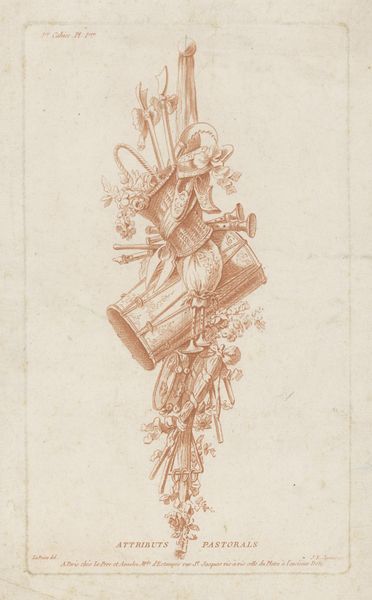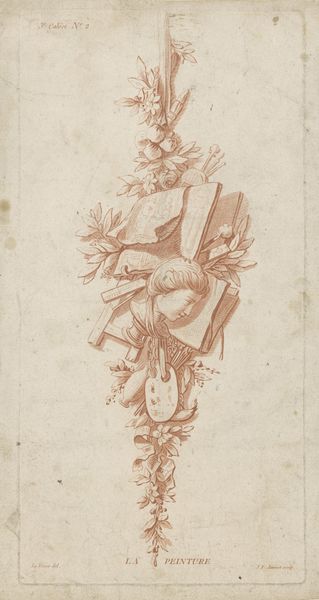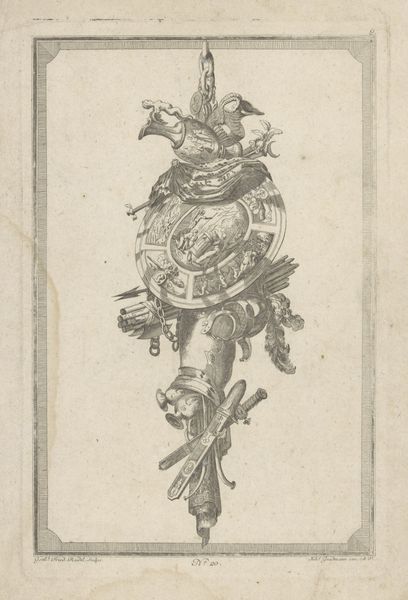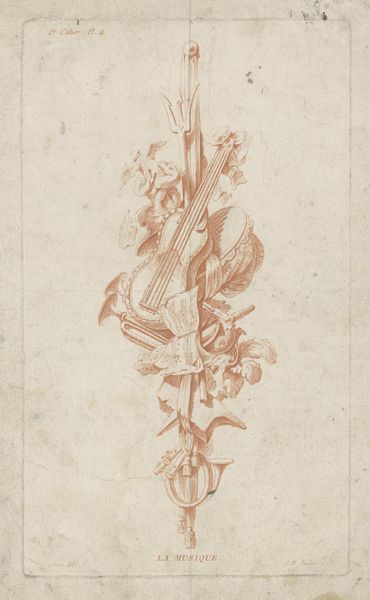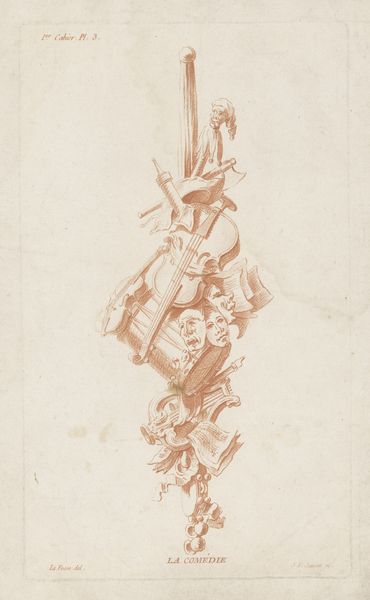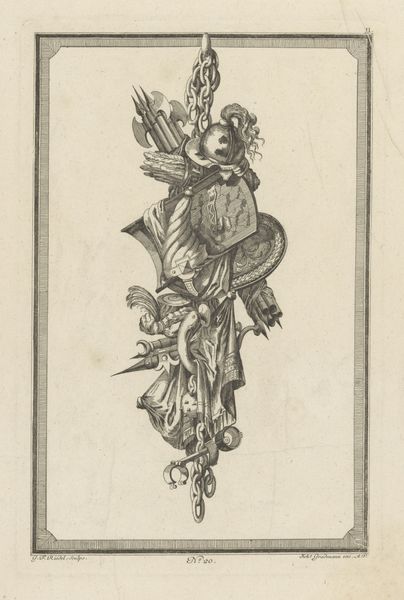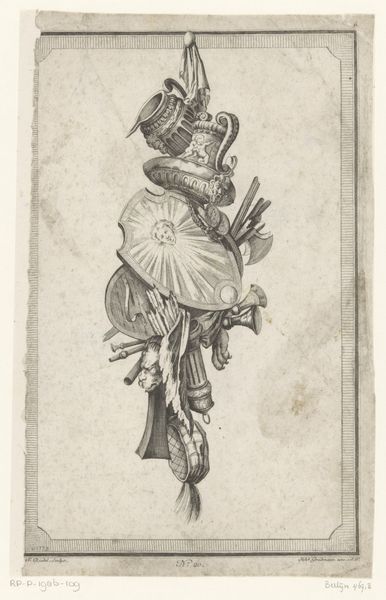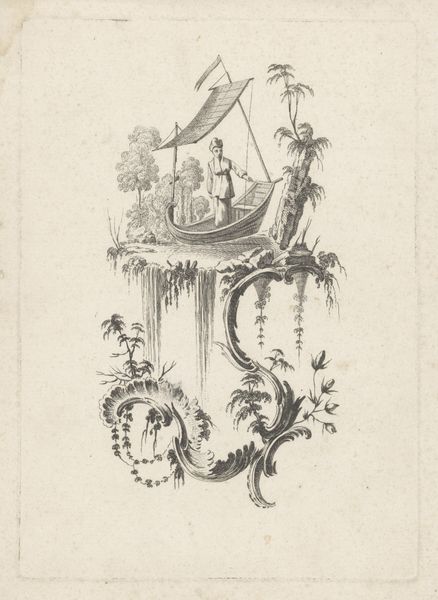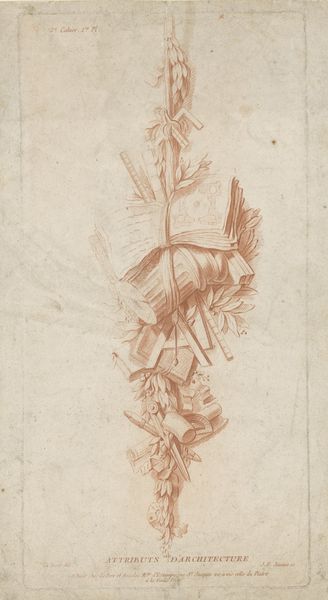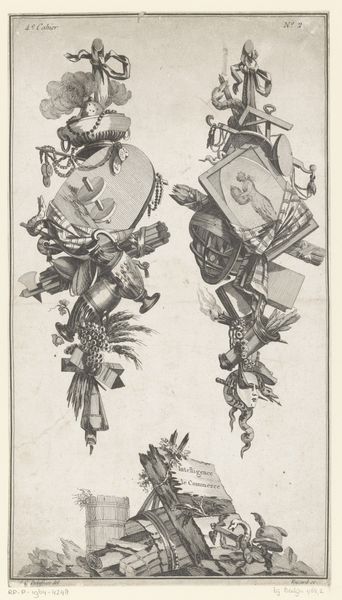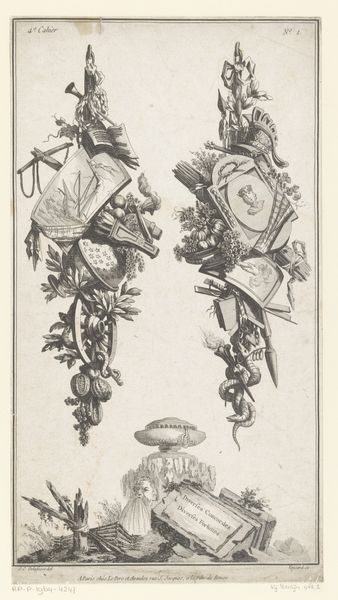
Dimensions: height 384 mm, width 190 mm
Copyright: Rijks Museum: Open Domain
Editor: This is "Astronomie," created by Jean François Janinet between 1772 and 1779. It’s an etching and engraving print housed at the Rijksmuseum. It’s a striking image—very intricate, almost like a technical drawing. I’m drawn to all the symbolic objects: the globe, books, and botanical elements. How should we interpret these combined symbols? Curator: Consider the context of its production. These tools and books wouldn’t have been luxury items, but objects of labor for scholars of the era, yet this is also high art, academic in its very core. Editor: I see what you mean, but how would that impact the interpretation of the print, considering the status it seems to have at the time? Curator: What does it tell us about the consumption of knowledge and status then? The print itself becomes a commodity. Etchings like this would be disseminated, democratizing this symbolism. A visual representation of labor available for mass consumption, if you will. It's a careful crafting of status into a consumable visual form. Editor: So, while depicting instruments of intellectual work, the print itself is also an object produced by labour, entering the cycle of consumption. Do you think the artist intended to reflect that, or do we read this meaning because of the lens we are using? Curator: I think they were fully aware of it. This piece straddles the line. Is it a celebration of knowledge or a reflection on its commodification, especially when turned into printmaking? Both, probably. Editor: I never thought of engravings as commodities before! Thanks. It’s definitely made me think about the wider material life of images like this.
Comments
No comments
Be the first to comment and join the conversation on the ultimate creative platform.
